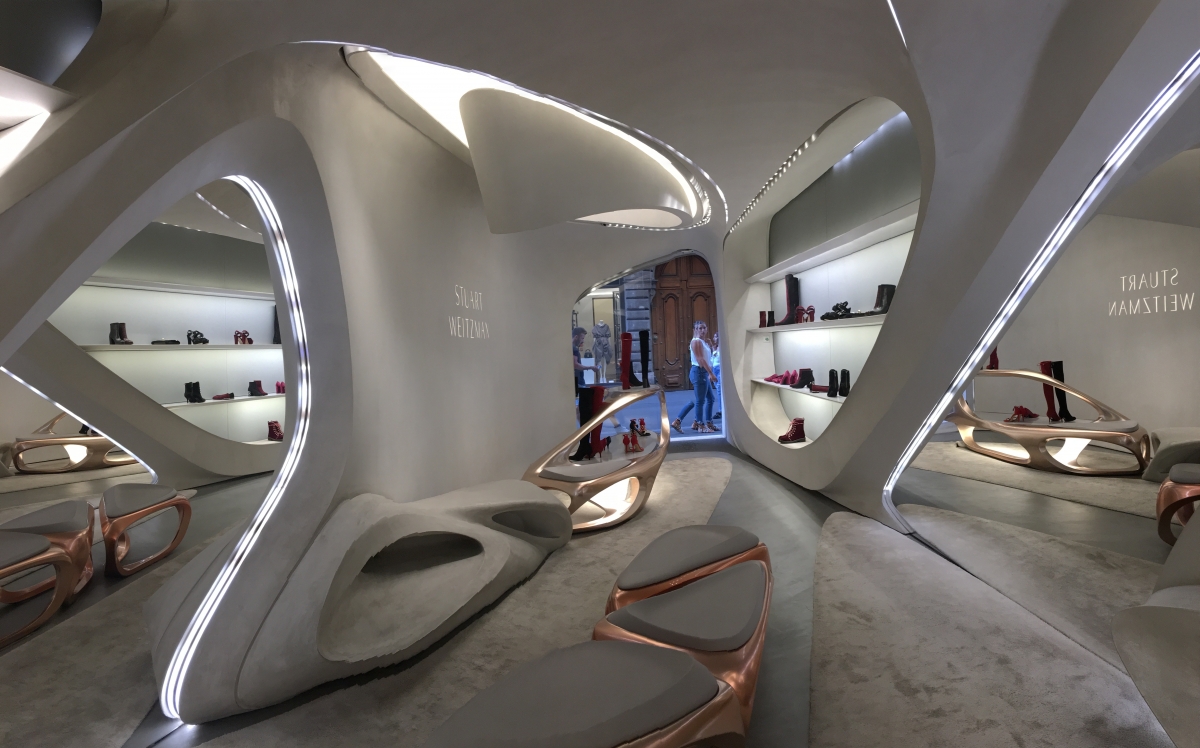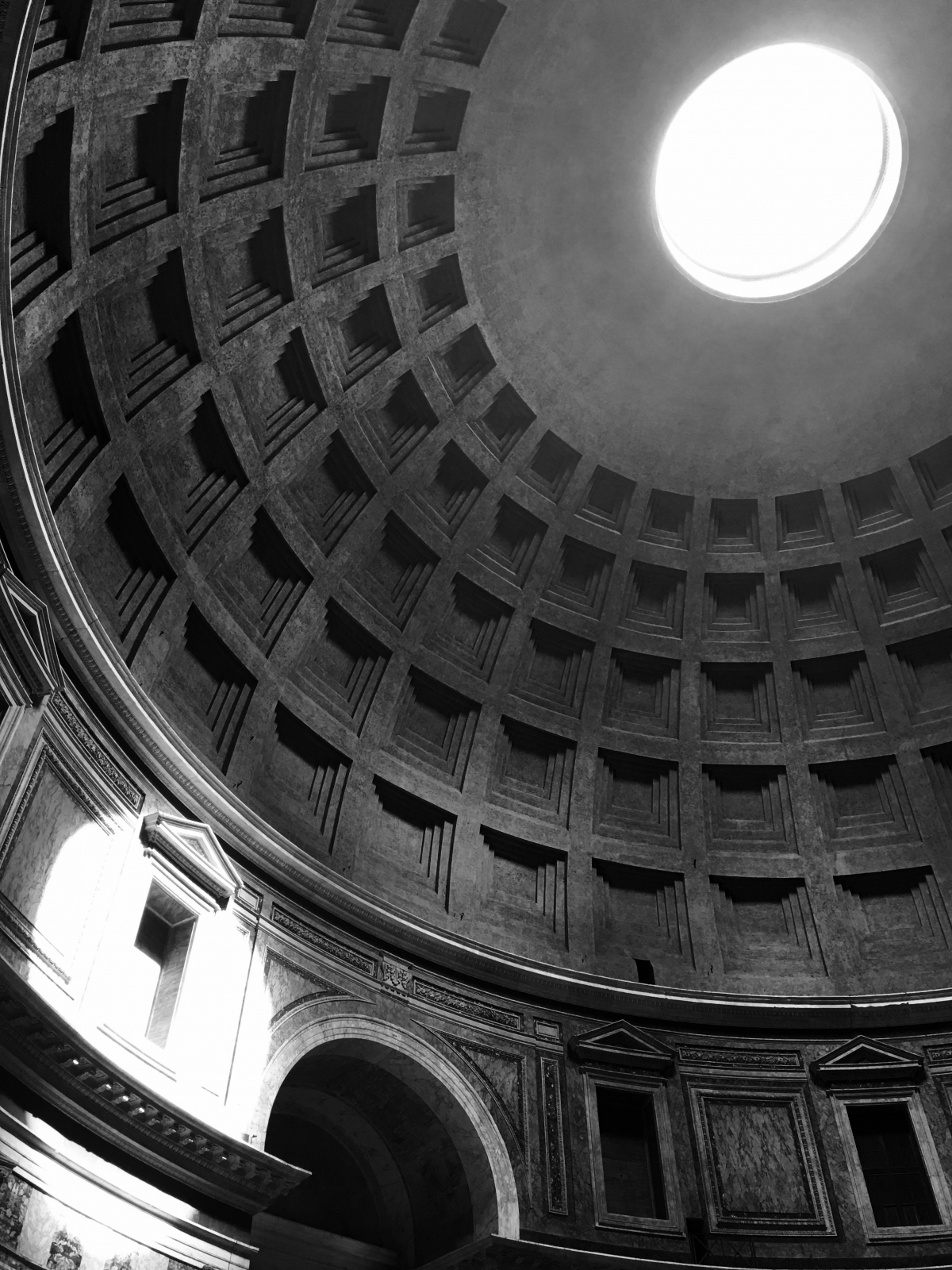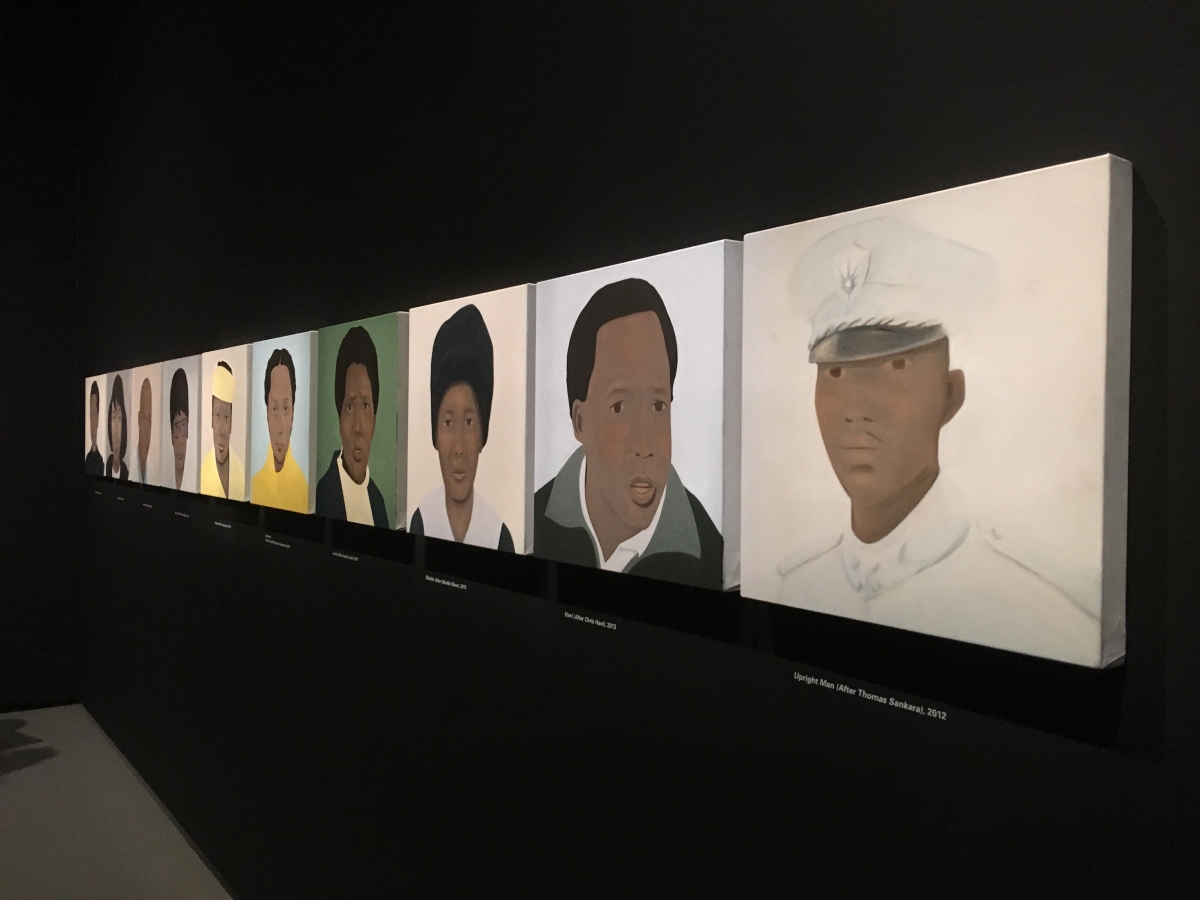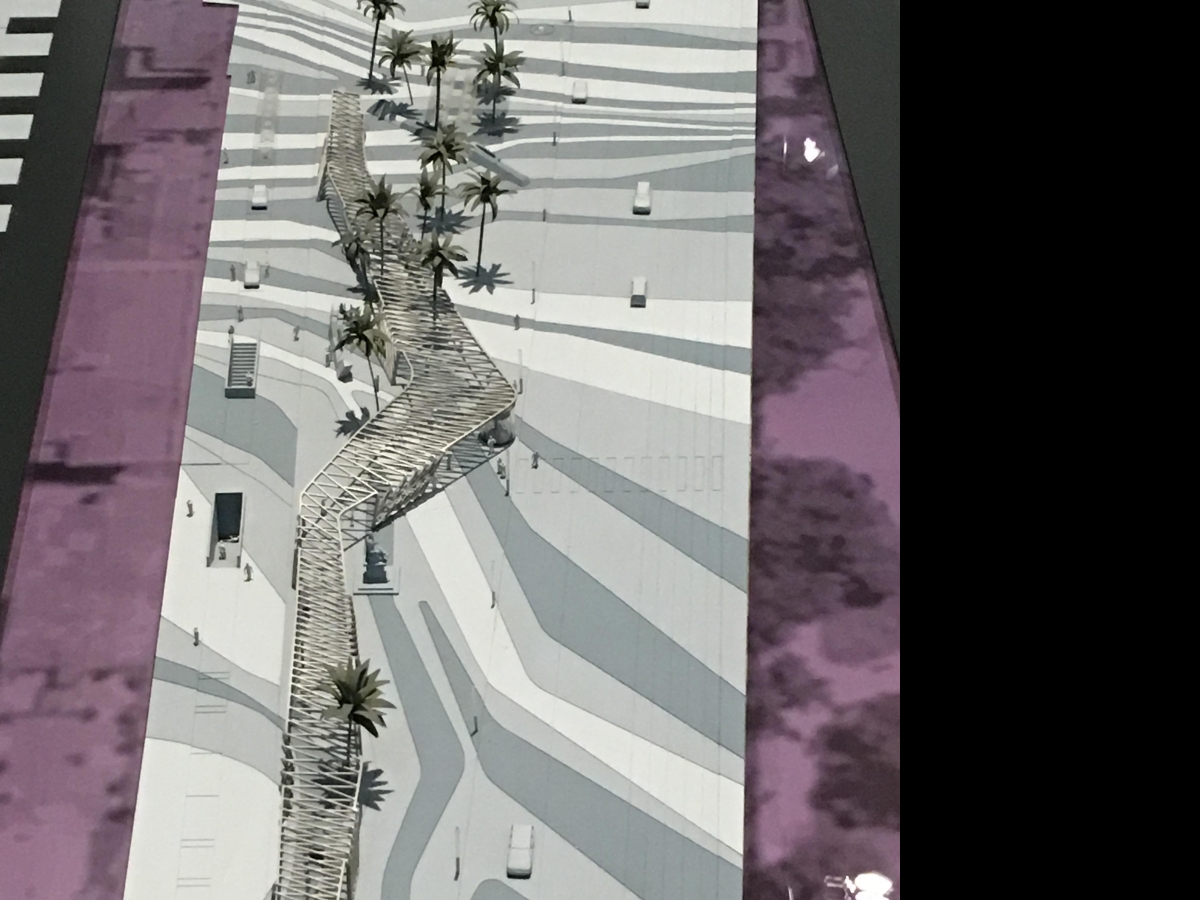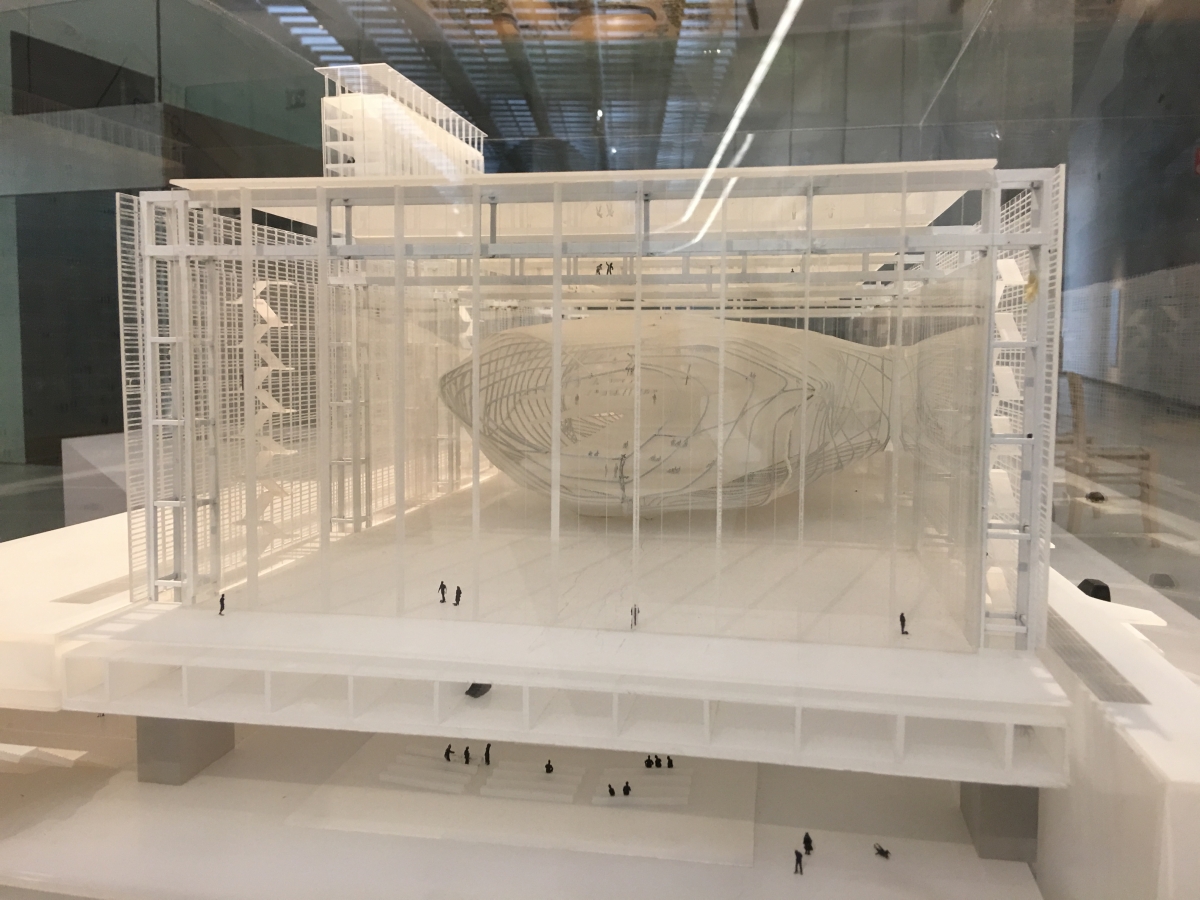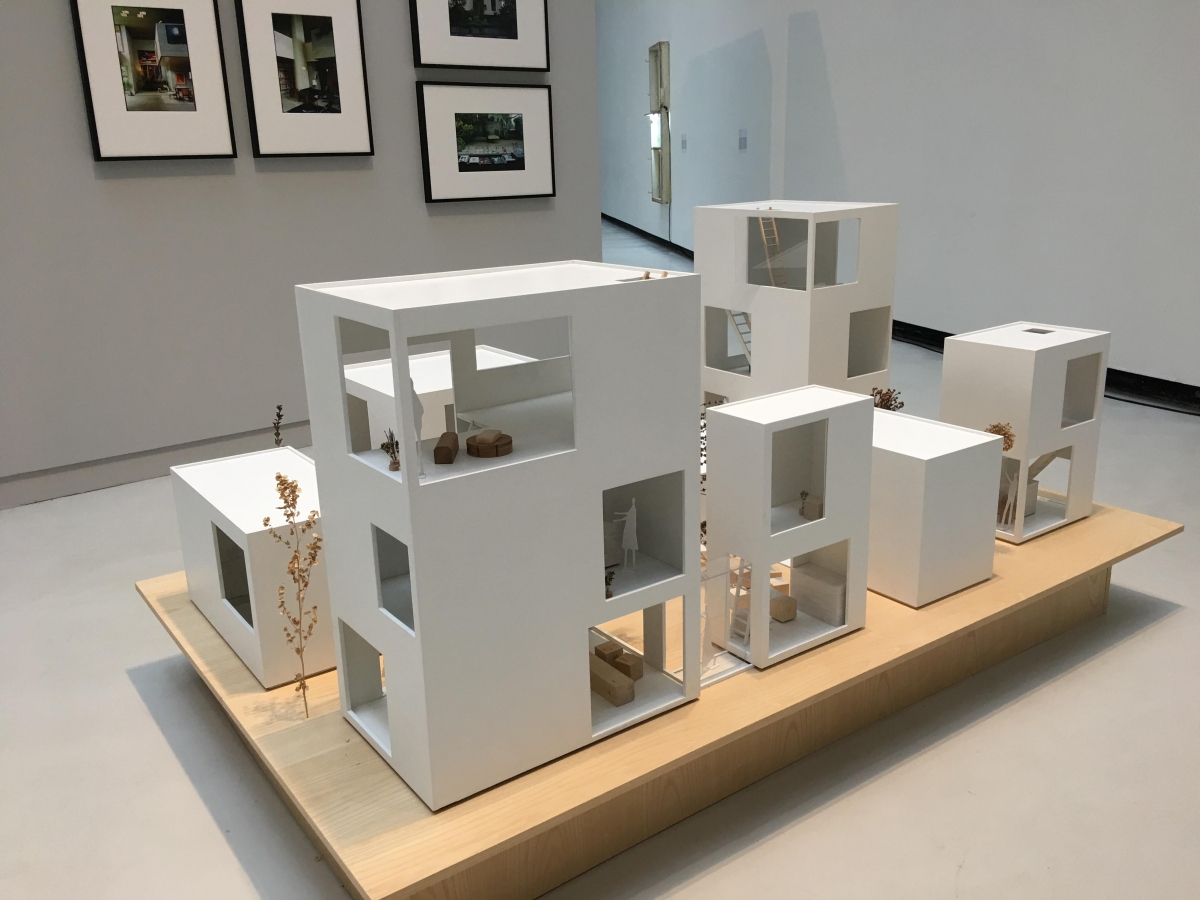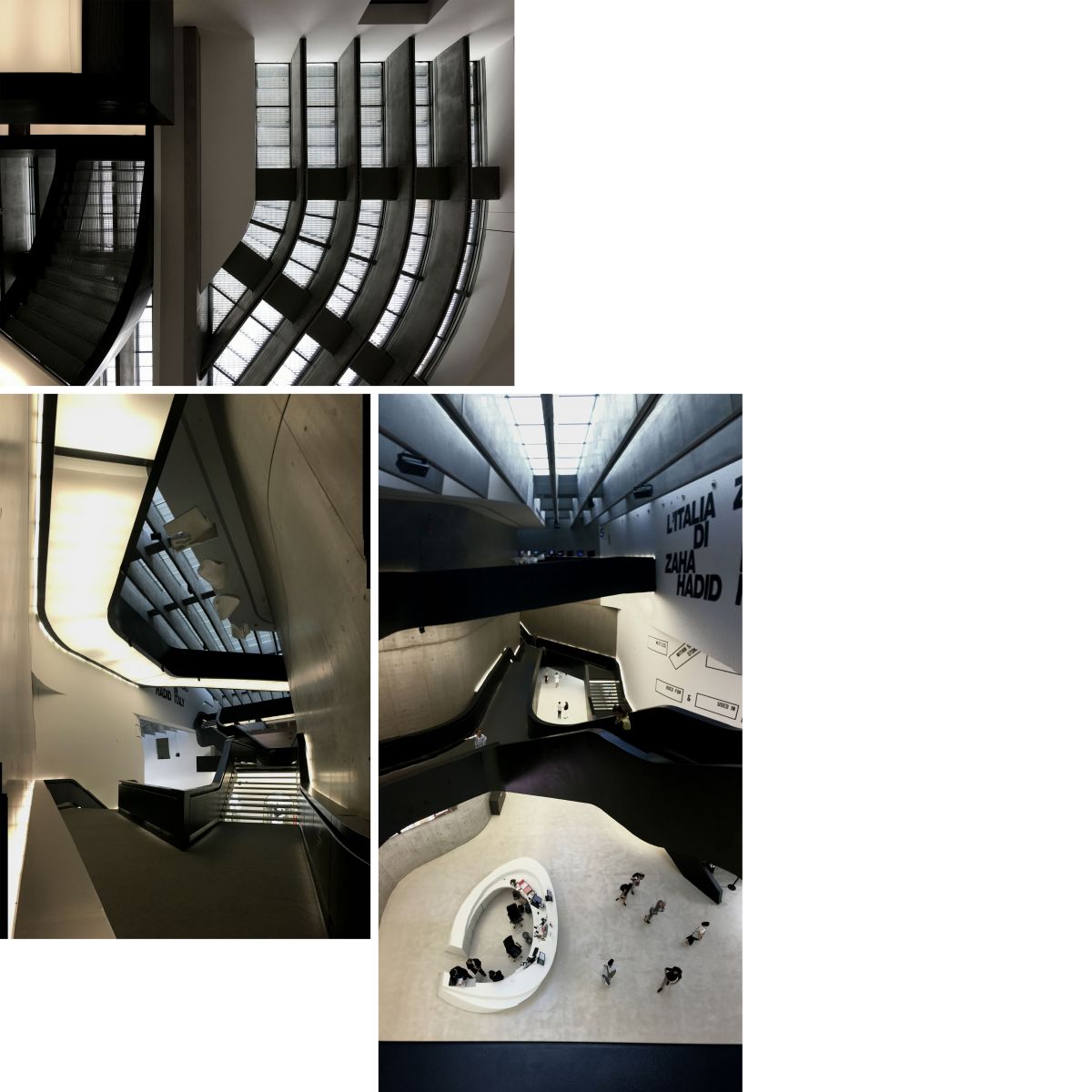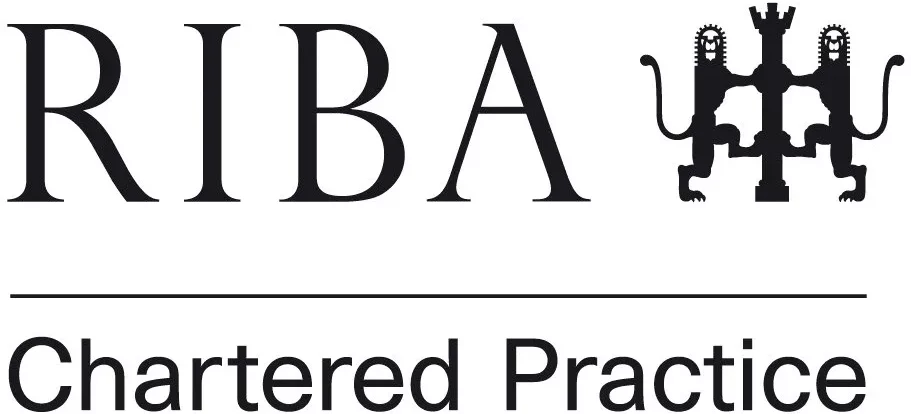ZAHA HADID FOR STUART WEITZMAN (MILAN)
Andrew Wallace from Andrew Wallace Architect + Interior Designers, was in Milan once and saw this Stuart Weitzman store design by Zaha Hadid.
International shoe designer, Stuart Weitzman’s Milan flagship store designed by Zaha Hadid Architects introduces a new commercial environment where geometric forms create an open discourse throughout the interior space in a rhythmic, sublime manner. The 3000 sqft boutique consists of elements that flow through the space in an fluid, ornamental nature. The Milan flagship is fluid and playful.
International shoe designer, Stuart Weitzman’s Milan flagship store designed by Zaha Hadid Architects introduces a new commercial environment where geometric forms create an open discourse throughout the interior space in a rhythmic, sublime manner. The 3000 sqft boutique consists of elements that flow through the space in an fluid, ornamental nature. The Milan flagship is fluid and playful.
THE PANTHEON IN ROME
Andrew Wallace from Andrew Wallace Architect + Interior Designers, was in Rome this summer and visitied one of the most popular monument in the city , The Pantheon.
Even today, almost 2000 years after its construction, the breathtaking pantheon is a remarkable building to see. The spectacular design, proportions, elegance and harmony are a striking reminder of the architecture of the great Roman Empire.
The Roman Pantheon is the most preserved and influential building of ancient Rome. It is a Roman temple dedicated to all the gods of pagan Rome. As the brick stamps on the side of the building reveal it was built and dedicated between A.D 118 and 125.
Even today, almost 2000 years after its construction, the breathtaking pantheon is a remarkable building to see. The spectacular design, proportions, elegance and harmony are a striking reminder of the architecture of the great Roman Empire.
The Roman Pantheon is the most preserved and influential building of ancient Rome. It is a Roman temple dedicated to all the gods of pagan Rome. As the brick stamps on the side of the building reveal it was built and dedicated between A.D 118 and 125.
TONY CRAGG : A RARE CATEGORY OF OBJECTS
Andrew Wallace ,of Andrew Wallace Architects + Interior Designers from Liverpool, went to the Yorkshire Sculpture Park and saw different exhibition, like the open air exposition of Tony Cragg.
A leanding artistof his generation, Tony Cragg’s practice grows from his fascination with the ‘vast storehouse’ of materials in the world and what he can make from them. Born in 1949, Cragg moved to Wuppertal (Germany) in 1977 and over the last forty years has created an extraordinary body of work , which he considers to be grouped into different families or series.
A leanding artistof his generation, Tony Cragg’s practice grows from his fascination with the ‘vast storehouse’ of materials in the world and what he can make from them. Born in 1949, Cragg moved to Wuppertal (Germany) in 1977 and over the last forty years has created an extraordinary body of work , which he considers to be grouped into different families or series.
BERNAD ZEHRFUSS , JEAN PROUVÉ – THE MAME PRINTWORKS IN TOURS.
Andrew Wallace ,of Andrew Wallace Architects + Interior Designers from Liverpool, went to Paris this summer and visited the Centre Pompidou where there was an exhibition about Jean Prouvé.
The Mame printworks represents an iportant mileston in the work of Bernard Zehrfuss, being his first project in France after an early carrer in unisi. It was equally a milestone for Jean Prouvé : the metal shed roof (whose asymmetric structure has the north-facing glazing typical of factory roofs) would inspire the «shell» form, so enriching his constructional vocabulary. Prouvé was asked by the architect to produce the shed roofs of the workshopss and the ligth constructions set on the terrace roof of the multi-floored administrative office.
The Mame printworks represents an iportant mileston in the work of Bernard Zehrfuss, being his first project in France after an early carrer in unisi. It was equally a milestone for Jean Prouvé : the metal shed roof (whose asymmetric structure has the north-facing glazing typical of factory roofs) would inspire the «shell» form, so enriching his constructional vocabulary. Prouvé was asked by the architect to produce the shed roofs of the workshopss and the ligth constructions set on the terrace roof of the multi-floored administrative office.
JEAN PROUVÉ , 1901-1984
Andrew Wallace ,of Andrew Wallace Architects + Interior Designers from Liverpool, went to Paris this summer and visited the Centre Pompidou where there was an exhibition about Jean Prouvé.
We need machine-made houses», declared Jean Prouvé in 1945, facing up to the tasks of post-War reconstrvuction. Given the industrial methods he developed, his project relied on a number of key constructional principles : the post and beam framwork for the «Métropole» and «Tropicale» houses; the shell for the roof od the Mame printworks; the crutch for the school in Villejuif. Whether load-bearing structures or façade elements, all components were of metal (steel or aluminium), generally in the form of folded sheet.
We need machine-made houses», declared Jean Prouvé in 1945, facing up to the tasks of post-War reconstrvuction. Given the industrial methods he developed, his project relied on a number of key constructional principles : the post and beam framwork for the «Métropole» and «Tropicale» houses; the shell for the roof od the Mame printworks; the crutch for the school in Villejuif. Whether load-bearing structures or façade elements, all components were of metal (steel or aluminium), generally in the form of folded sheet.
THENJIWE NIKI NKOSI
Andrew Wallace ,of Andrew Wallace Architects + Interior Designers from Liverpool, went to Paris this summer and visited the LouisVuitton Fondation.
1980, New York, USA. Lives and works in Johannesburg. Born into an activist family returned from the USA at the end of apartheid, this artist questions memory and through it the idea of heroes. These are the 16 portraits composing the series ‘Heroes’ That the artist developed after the death of Nelson Mandela in December 2001.
1980, New York, USA. Lives and works in Johannesburg. Born into an activist family returned from the USA at the end of apartheid, this artist questions memory and through it the idea of heroes. These are the 16 portraits composing the series ‘Heroes’ That the artist developed after the death of Nelson Mandela in December 2001.
SAN PASQUALE STATION IN NAPLES BY BORIS PODRECCA
Andrew Wallace, from Andrew Wallace Architects + Interior Designers, an architect and interior designer from Liverpool went to an exhibition in Rome and saw different project like the San Pasquale metro station in Naples by the architect Boris Podrecca.
The project aims at connecting the two opposed worlds of Naples, namely the daytime surface and the underground, the latter being unknown before the intervention. The project area was underwater until the 800s ; thusly, the new square and station are thematically linked to water.
The project aims at connecting the two opposed worlds of Naples, namely the daytime surface and the underground, the latter being unknown before the intervention. The project area was underwater until the 800s ; thusly, the new square and station are thematically linked to water.
NEW EUR CONGRESS CENTRE ROMA
Andrew Wallace, from Andrew Wallace Architects + Interior Designers, an architect and interior designer from Liverpool went to an exhibition in Rome.
The international competition for the Palazo Centro Congressi EUR was promoted by the City of Rome and won in 1998 by studio Fuksas. The project concept is articuladed in three images: the container, the Cloud and the blade of the adjacent hotal. The first is a steel and glass parallelepiped, some thirty metres in height, flanked by two public plazas that connect it to the neighbourhood.
The international competition for the Palazo Centro Congressi EUR was promoted by the City of Rome and won in 1998 by studio Fuksas. The project concept is articuladed in three images: the container, the Cloud and the blade of the adjacent hotal. The first is a steel and glass parallelepiped, some thirty metres in height, flanked by two public plazas that connect it to the neighbourhood.
MORIYAMA HOUSE BY RYUE NISHIZAMA
Andrew wallace at Andrew Wallace architects and interiors designers an architect from Liverpool. He visited the Maxi Museum in Rome and saw the Exhibition by Ryue Nishizama who design the Moriyama House in Tokyo.
The project was designed for a client who had made the unusual decision to stop working, and therefore wanted a portion of the house to be utilized as profit-making rental units. This initial brief led the architect to fragment the house into a number of distinct units separated by garden spaces, and this decomposition became the determining motivation of the design.
The project was designed for a client who had made the unusual decision to stop working, and therefore wanted a portion of the house to be utilized as profit-making rental units. This initial brief led the architect to fragment the house into a number of distinct units separated by garden spaces, and this decomposition became the determining motivation of the design.
Zaha Hadid – Maxxi Museum (Rome)
Andrew Wallace, from Andrew Wallace Architects, an architect and interior designer from Liverpool went to Rome a few weeks ago and visit the MAXXI Museum designed by Zaha Hadid. The museum open his door in 2010, Zaha hadid said that the museum is ‘not a object-container, but rather a campus for art’, also the place is a dynamic and interactive space. The main goal of the project was the flexibility of the place despite the clear and organized plan, the continuity of spaces makes it a suitable place for any kind of moving and temporary exhibition.
